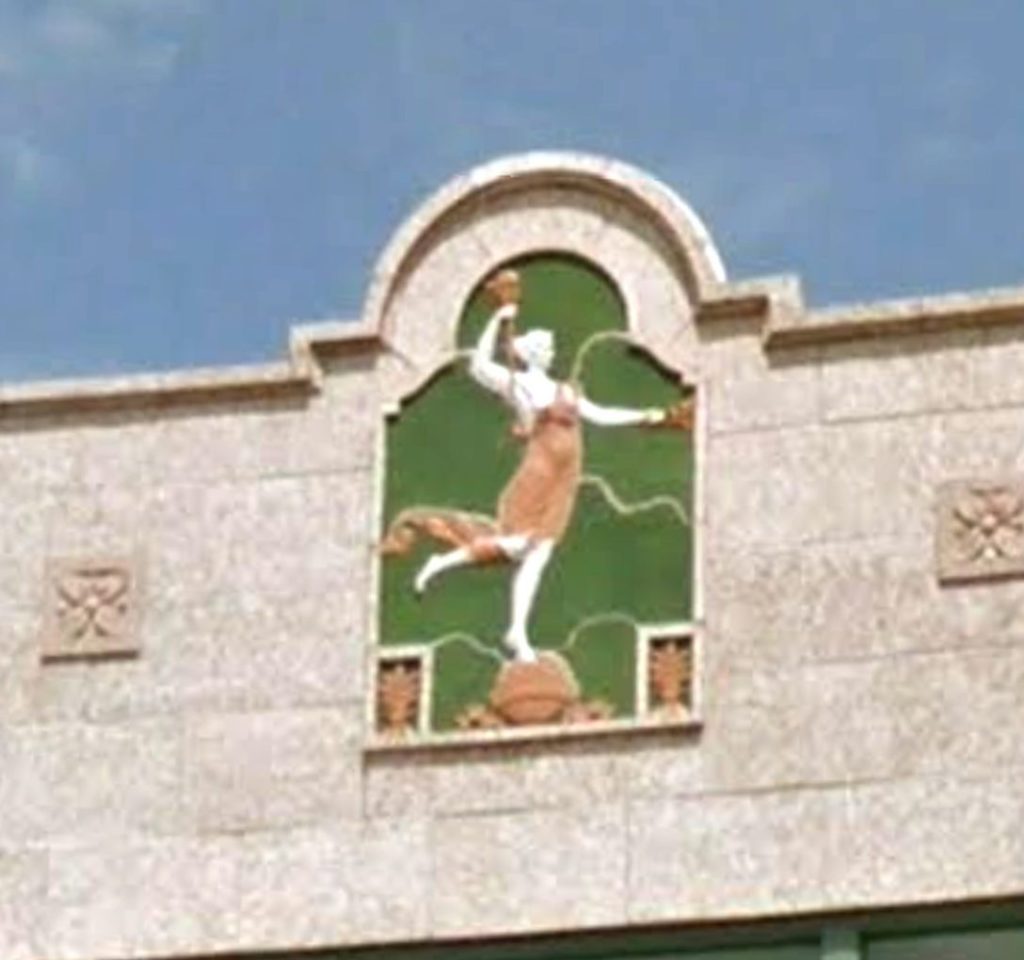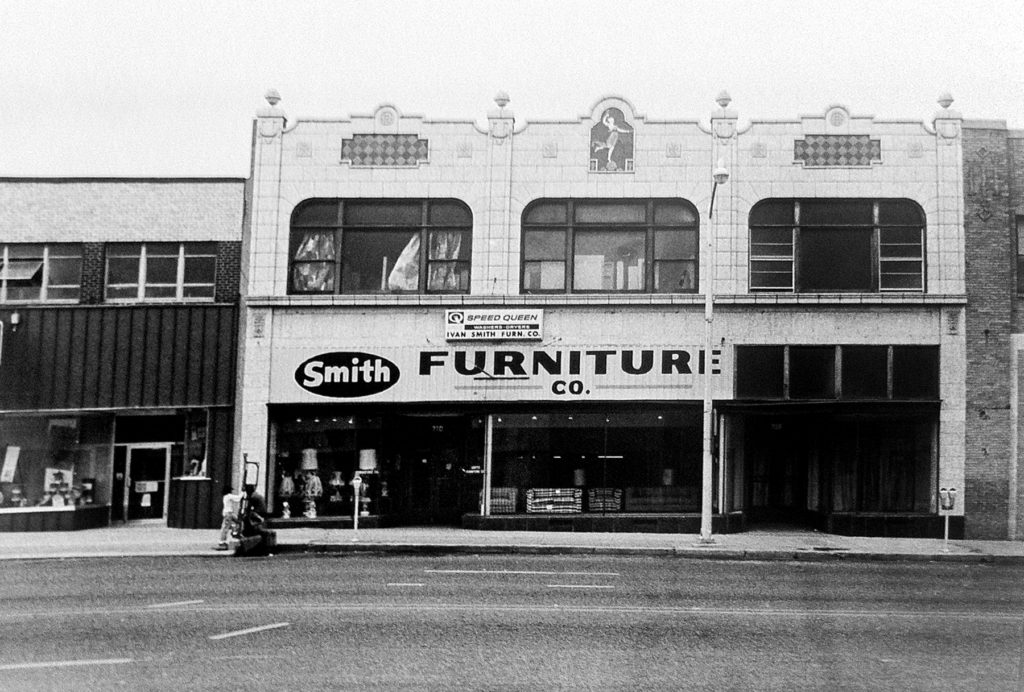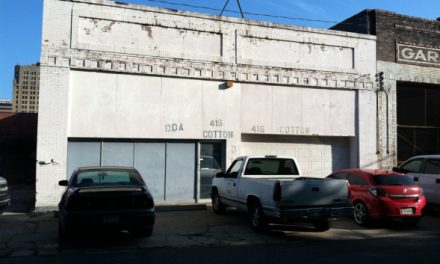** Each month at the Downtown Artwalk, the DDA’s Liz Swaine gives a short ‘History in 5’ talk about a place, space or event in downtown Shreveport. This is followed by an opportunity to ‘Sketch the City’ with AIA Architect Mischa Farrell. These talks and architectural sketch sessions are popular, free and open to all, and we encourage you to come experience one for yourself!

The June History in 5 was about the building we now know as artspace at 708 Texas, and as with everything downtown, the history is compelling. 
When you look back in the City Directories at the history of 708 Texas, it’s amazing what all was there. In 1890, it was a house owned by Mr. W.T. Jackson; soon after it became ‘Cooper’s Mammoth Mule Yard.’ Over time, it was a sign shop, a shoe store, a bakery. In fact, the use of the building sometimes changed several times in one year.

All that changing of uses stopped in 1929 when a new structure- a brand new Montgomery Ward store- was built. Montgomery Ward is itself an interesting story. Founded by Aaron Montgomery Ward and Andrew Ward in 1872, it was first just a catalog service. Aaron was a traveling salesman who realized that his country customers wanted ‘city’ goods but the only place they could get them was at the small independent Mom-and-Pop stores, which had to charge high prices and sometimes, the quality was poor. Aaron figured out a way to cut out the middleman by creating a catalog where the customer could order directly what they wanted. He was really the Amazon of the day, and retailers disliked him as much as they dislike Amazon now. In fact, rural retailers took to burning his catalogs in public displays of ‘dis’ affection.

In 1883, his catalog had become known as the ‘Wish’ Book and offered an astounding 10,000 items! It didn’t take long for other businesses to take notice- in 1896, a competitor entered the fray- a man named Richard Warren Sears. Fast forward to 1926, when MW opened its very first brick-and-mortar retail store in Indiana, by 1930, the year the downtown Shreveport store was completed, MW had 531 retail outlets.

Not artspace! Mineral Wells, Texas.
Have you ever driven through another city and seen what you thought was artspace? There’s a reason. MW made a business decision to build similar Art Deco structures in mid-size cities around the country, so that distinctive facade has been replicated many times. The distinctive medallion at the top is called ‘Progress Lighting the Way for Commerce’ and was designed for the stores by sculptor J. Massey Rhind. It was made expressly for MW by the Atlantic Terra Cotta Company. Other

Progress Lighting the Way
things- the windows, the fact that the stores were two to three stories, and often the materials used – were the same from city to city.

Not artspace! Lexington, KY.
MW was notable for something else, too. In 1939, as part of a Christmas promotional campaign, staff copywriter Robert L. May, created an illustrated poem called Rudolph, the Red-Nosed Reindeer. By the way, May was Jewish, which we think is fun considering his iconic contribution to the Christmas season!
Back to the business itself- in 1985, MW closed their catalog business and in 2000, closed entirely. Times had changes and MW had not been able to keep up.
According to the City Directories, downtown Shreveport’s MW had moved by 1940 (we are unsure where they moved, but they ended up much later at then-Southpark Mall on Jewella Ave.). After MW, the building became the American Furniture Company, by 1990 it had become Smith Furniture and by 1991, the Ivan Smith Furniture Company, Ivan  Smith’s FIRST store. By 2002, the building was vacant, and looking forlorn, so the Downtown Development Authority and the Downtown Shreveport Development Corporation went to Mr. Smith and asked him to consider selling the building to them so that they could rehab the building to try to create a spark for the West Edge Arts District.
Smith’s FIRST store. By 2002, the building was vacant, and looking forlorn, so the Downtown Development Authority and the Downtown Shreveport Development Corporation went to Mr. Smith and asked him to consider selling the building to them so that they could rehab the building to try to create a spark for the West Edge Arts District.
 DDA/DSDC had already done the same thing in the 600 block with the Robinson Film Center (they bought and rehabbed the building and found an exciting tenant) and wanted to keep up the progress created with that.
DDA/DSDC had already done the same thing in the 600 block with the Robinson Film Center (they bought and rehabbed the building and found an exciting tenant) and wanted to keep up the progress created with that.

Parish Taceaux, now part of 708 Texas St.
Though the building had serious sentimental value to the Smiths, they agreed to sell and in 2002, DDA/DSDC spent spent $700,000 on acquisition and rehab to create artspace, a multi-disciplinary arts center. SRAC raised additional funds to rehab and build out the center, and most recently, worked to raise funds to rehab the section that is now Parish Taceaux restaurant.
We encourage you to go by and experience the space as it is now and imagine what it would have been throughout a large part of its history.




